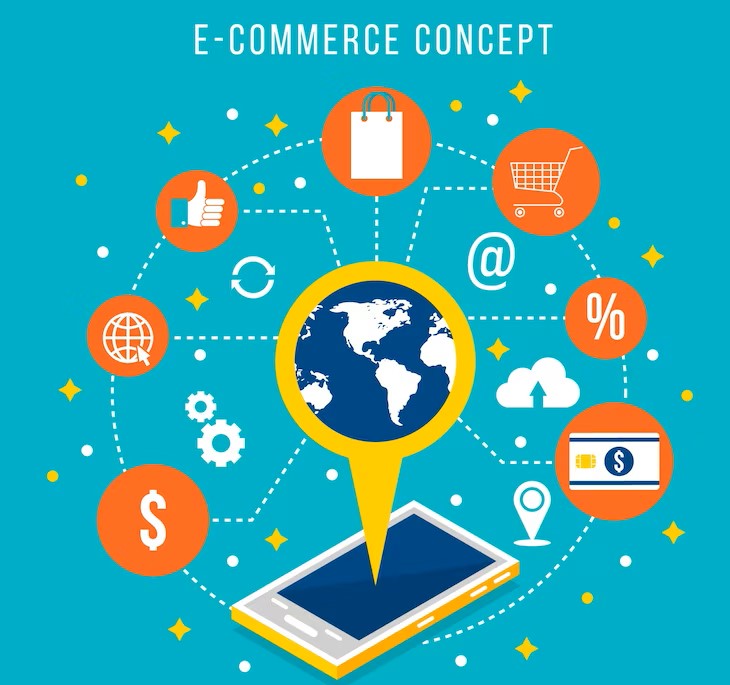Ecommerce is one of the fastest-growing and most dynamic sectors in the world. According to a report by eMarketer, global ecommerce sales are expected to reach $6.54 trillion by 2023, up from $4.28 trillion in 2020. But what are the trends that will drive this growth and change the online shopping landscape in the next few years? In this blog post, we will explore some of the most important global ecommerce trends to watch out for 2023 and beyond.
Table of Contents
ToggleSocial Commerce
Social commerce is the integration of ecommerce and social media platforms. Social commerce allows users to discover, browse, share and buy products directly from their favorite social networks, such as Facebook, Instagram, TikTok and more. Social commerce can help you increase brand awareness, customer loyalty, engagement and conversions. According to a report by Business Insider Intelligence, social commerce sales in the US are expected to grow by 34.8% annually from 2019 to 2023, reaching $84.2 billion. Some of the ways you can leverage social commerce for your business are:
- Shoppable Posts: Shoppable posts are posts that feature products that users can click on and buy without leaving the social platform. Shoppable posts can help you showcase your products, drive traffic to your website and boost sales. Learn more about shoppable posts here.
- Live Shopping: Live shopping is a form of live video streaming that allows users to watch and interact with sellers or influencers who showcase and sell products in real time. Live shopping can help you create a sense of urgency, excitement and trust among your customers and increase your conversion rates. Learn more about live shopping here.
- Social Ads: Social ads are ads that appear on social media platforms and target users based on their interests, behaviors and demographics. Social ads can help you reach new audiences, generate leads and drive sales. Learn more about social ads here.
Omnichannel Commerce
Omnichannel commerce is the strategy of providing a seamless and consistent shopping experience across multiple channels and touchpoints, such as online, offline, mobile, social, email and more. Omnichannel commerce can help you meet your customers’ expectations, preferences and needs, increase customer satisfaction and retention, and optimize your sales performance. According to a report by Harvard Business Review , omnichannel customers spend an average of 4% more on every shopping occasion in-store and 10% more online than single-channel customers. Some of the ways you can implement omnichannel commerce for your business are:
- Mobile Commerce: Mobile commerce is the practice of buying and selling products or services via mobile devices, such as smartphones or tablets. Mobile commerce can help you reach more customers, offer convenience and flexibility, and enhance customer experience. Learn more about mobile commerce here.
- Click and Collect: Click and collect is a service that allows customers to order products online and pick them up at a physical store or location. Click and collect can help you reduce delivery costs, increase foot traffic, and offer convenience and speed to your customers. Learn more about click and collect here.
- Personalization: Personalization is the process of tailoring your products, services, content or offers to each individual customer based on their data, behavior and preferences. Personalization can help you increase customer satisfaction, loyalty and conversions. Learn more about personalization here.
How Technology Trends Can Boost Your Business in 2023
Sustainability
Sustainability is the concept of meeting the needs of the present without compromising the ability of future generations to meet their own needs. Sustainability is becoming more important and relevant for ecommerce businesses as customers are becoming more aware and concerned about the environmental and social impact of their purchases. According to a report by IBM and NRF, nearly 70% of consumers in the US and Canada say it is important for a brand to be sustainable or eco-friendly. Some of the ways you can adopt sustainability for your business are:
- Eco-friendly Packaging: Eco-friendly packaging is packaging that is made from renewable, recycled or biodegradable materials and has minimal impact on the environment. Eco-friendly packaging can help you reduce waste, save costs, protect your products and appeal to your customers. Learn more about eco-friendly packaging here.
- Carbon Neutral Delivery: Carbon neutral delivery is delivery that offsets the carbon emissions generated by the transportation of goods by investing in projects that reduce or remove greenhouse gases from the atmosphere. Carbon neutral delivery can help you reduce your environmental footprint, enhance your brand image and attract more customers. Learn more about carbon neutral delivery here.
- Social Responsibility: Social responsibility is the duty of a business to act ethically and contribute to the well-being of society. Social responsibility can help you build trust, loyalty and reputation among your customers, employees and stakeholders. Examples of social responsibility activities are donating to charities, supporting local communities, promoting diversity and inclusion and more.
Conclusion
Ecommerce is a dynamic and exciting industry that offers endless opportunities for growth and innovation. By keeping up with the latest global ecommerce trends, you can prepare your business for the future and gain a competitive advantage in the online shopping market.

